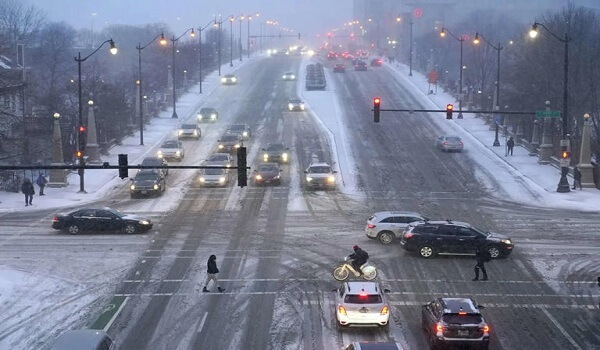The United States is experiencing severe winter storms as the polar vortex from the Arctic spreads southward, causing temperatures to drop to -50°C (-60°F).The polar vortex is a large low-pressure and cold air system that forms around the Earth’s poles.It is always near the poles, getting stronger in winter and weaker in summer.The “vortex” means the anticlockwise flow of air that keeps the cold air confined near the poles.
Types of Polar Vortex
- Tropospheric: It is found in the lowest atmospheric layer (up to 10-15 km), where most weather events occur.
Stratospheric Polar Vortex
- It is found at higher altitudes (15-50 km).
- It is strongest in autumn and disappears in summer.
Key features of the polar vortex
Northern Hemisphere vortex: Two main centers:
- Baffin Island, Canada.
- North-eastern Siberia.
Southern Hemisphere vortex
- Usually located around the South Pole.
- It is stronger and more stable than the northern vortex, making it less likely to become unstable.
Causes of the polar vortex
- Stable state: Under normal conditions, the polar vortex remains strong and confined within the Arctic Circle, keeping cold air confined to the polar regions.
- Weakened state: When warm air rises from the lower atmospheric layer, it disrupts the rotational flow of the polar vortex, causing the arctic air to spread southward.
Causes contributing to a weakened state
- Significant weather patterns (such as strong winds in mountainous regions).
- Changes in tropical climate systems or sea surface temperatures.
- Climate change, especially the effect of uneven heating over the poles, which weakens the polar vortex.
Effects of the Polar Vortex
- Extreme cold temperatures – Extreme cold temperatures occur in mid-latitudes.
- Long-term cold waves – This can disrupt normal life activities and put pressure on infrastructure.
- Increased snowfall – e.g., more snowfall in parts of the eastern U.S., Canada and Europe.
- Historical example (2013-14) – The polar vortex caused record-breaking snowfall and a 3% ice cover on Lake Michigan.
- Frost damage to crops – Crops may be damaged, especially in areas that do not experience extreme cold; planting or harvesting may be delayed.

